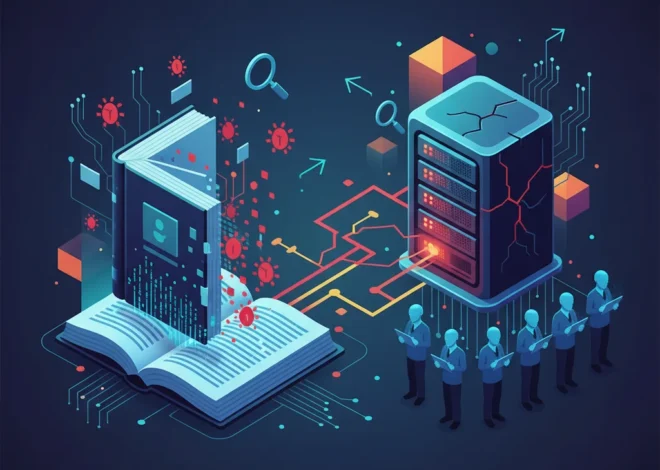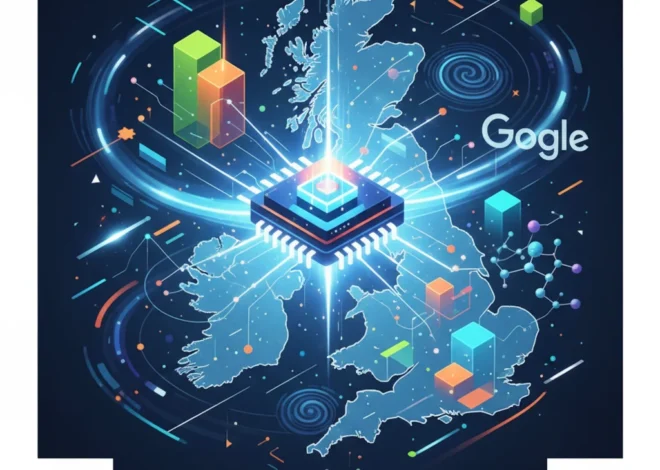
Mars: The Ultimate Tech Startup? Why AI and Software Are the Real Mission
The Red Planet: Not Just a Destination, But a Digital Revolution
For generations, Mars has been the ultimate “what if.” It’s the stuff of science fiction, a dusty red beacon in the night sky symbolizing humanity’s most audacious dreams. We imagine brave astronauts planting a flag, the culmination of a journey powered by colossal rockets and sheer human will. But as a new Financial Times podcast series explores, the question “Can man land, and live, on Mars?” isn’t just about propulsion and physics anymore. It’s about code.
The monumental challenge of establishing a human presence on Mars is, at its core, one of the most complex software, artificial intelligence, and automation projects ever conceived. Forget your typical Silicon Valley “unicorn”; a Mars colony is the ultimate startup. The venture is high-risk, the environment is unforgiving, the budget is astronomical, and failure isn’t just a lost investment—it’s a matter of life and death. The real heavy lifting won’t be done by rockets alone, but by the lines of code, machine learning models, and autonomous systems that will serve as the digital backbone for survival 140 million miles from home.
This isn’t just a story for astrophysicists and astronauts. It’s a story for developers, tech entrepreneurs, and innovators. The technologies we must invent to survive on Mars will inevitably reshape life here on Earth. Let’s unpack the tech stack required for humanity’s next giant leap.
The Martian Problem Statement: When Earth’s Help Is 20 Minutes Away
The single greatest challenge in operating on Mars is the communication delay. Light takes anywhere from 4 to 24 minutes to travel between Earth and Mars, meaning a round-trip message can take nearly an hour. You can’t just “joystick” a rover around a rock, and you certainly can’t have Mission Control manually override a failing oxygen generator in real-time. This communication gap fundamentally changes everything. It dictates that any Martian outpost must be self-sufficient, self-diagnosing, and self-healing. In short, it must be intelligent.
This is where the principles of modern technology—automation, AI, and robust software—become non-negotiable pillars of survival. The mission requires a complete paradigm shift from remote control to full autonomy. Every system, from life support to scientific rovers, must be able to perceive its environment, make decisions, and act on them without human intervention. This is the ultimate test for applied artificial intelligence.
The Day the Internet Stood Still: Deconstructing the AWS Outage and Its Domino Effect
The Software Stack for Survival: Coding for an Alien World
Building a habitat on Mars is like creating the most advanced smart home imaginable, but with consequences far more severe than your thermostat being off by a few degrees. The software running a Martian base is the invisible lifeblood of the mission.
1. Autonomous Life Support and Habitat Management
Life support systems—air processors, water reclaimers, and power grids—cannot afford a moment of downtime. These systems will be governed by sophisticated software that uses machine learning for predictive maintenance. By analyzing thousands of sensor data points per second, an AI can predict a component failure weeks before it happens, allowing for automated repairs or resource re-routing. This isn’t just automation; it’s pre-emptive survival, powered by code. The entire habitat will operate on an “Internet of Things” (IoT) framework of unprecedented complexity, where every valve, sensor, and solar panel is part of a single, intelligent network.
2. The “Seven Minutes of Terror”: A Masterclass in Automation
The process of entering the Martian atmosphere and landing safely on the surface is famously known as the “seven minutes of terror.” During this time, the spacecraft is completely on its own due to the communication lag. As NASA details, the entire sequence—from deploying the heat shield to firing the retro-rockets and lowering the rover on a “sky crane”—is a perfectly choreographed, fully automated ballet (source). The landing software must make thousands of calculations in real-time, adjusting for atmospheric conditions and identifying safe landing zones. This is high-stakes programming where a single bug could doom a multi-billion dollar mission.
3. Resource Management and In-Situ Utilization
You can’t just order supplies on Mars. The first colonists will have to “live off the land” by extracting resources like water from ice deposits and oxygen from the atmosphere. This process, known as In-Situ Resource Utilization (ISRU), is an enormous automation challenge. Robotic miners will need to prospect for resources, extract them, and process them into usable materials like water, air, and rocket fuel—all without direct human oversight. This requires a seamless integration of robotics, AI-driven geological analysis, and automated chemical processing plants.
AI: The First True Martian
While humans will follow, the first truly independent “Martians” will be artificial intelligences. They will be the scouts, the scientists, and the tireless caretakers that make a human presence possible.
Consider NASA’s Perseverance rover. It uses an enhanced autonomous navigation system called AutoNav, which allows it to analyze the terrain ahead in 3D and plot the safest, most efficient path on its own. This AI-powered vision system allows it to travel much faster and further than previous rovers that required painstaking instructions from Earth (source). Future missions will take this to the next level with fleets of AI-driven drones scouting landing sites and robotic assistants capable of constructing habitats before the first humans even arrive.
To illustrate the radical shift required, let’s compare mission tasks with and without the advanced technologies we’re discussing:
| Mission-Critical Task | Traditional Approach (Earth-Controlled) | Mars Approach (AI/Automation-Driven) |
|---|---|---|
| Geological Survey | Operators on Earth manually plan a rover’s path and select targets, taking days per command cycle. | An AI-powered rover autonomously identifies scientifically interesting rock formations, navigates to them, and conducts preliminary analysis in a single Martian day. |
| System Maintenance | Engineers on Earth analyze telemetry data to diagnose issues, then uplink complex repair sequences. | A machine learning model constantly monitors system health, predicts failures, and dispatches a robotic arm to replace a faulty component automatically. |
| Landing Site Selection | Years of orbital reconnaissance and human analysis are used to pre-select a large, safe, but potentially uninteresting, landing ellipse. | During descent, the lander’s AI uses real-time terrain mapping to divert from hazards and select a precise, high-value scientific location to land. |
| Power Management | Strict, pre-planned schedules for power usage to conserve energy, especially overnight. | An intelligent grid manager optimizes power distribution based on real-time weather predictions (e.g., dust storms), scientific priorities, and habitat needs. |
This table makes it clear: a sustained presence on Mars is computationally impossible without delegating immense responsibility to intelligent, autonomous systems. The mission to Mars is effectively a mission to build a truly independent AI.
The Code Red Shift: Why Silicon Valley's Titans Are Ditching Liberalism for the New Right
The Unseen Frontiers: Cybersecurity and “SaaS” in Space
When your entire existence depends on software, new vulnerabilities emerge. The cybersecurity of a Martian colony is a matter of life and death. A malicious actor who compromises the habitat’s network could shut down life support or corrupt navigation data. The software for Mars must be built on a foundation of zero-trust architecture, with layers of redundancy and fail-safes that are virtually impenetrable. This is a monumental challenge that will push the boundaries of secure programming and resilient network design.
Furthermore, as a colony grows, how will its digital infrastructure evolve? While connecting to a terrestrial cloud like AWS or Azure is impossible, the principles of cloud computing will be essential. We will need to build a “Mars-local cloud”—a distributed, fault-tolerant network of servers and data centers within the colony itself. This would allow for on-demand computing resources for scientific experiments, data processing, and habitat operations. Could we see the emergence of a “Habitat-as-a-Service” (SaaS) model, where core life support and operational software is managed as a centralized service for different modules and experiments? This kind of innovative thinking is what will be required to build a scalable, sustainable Martian society.
The Journey to Mars Begins in a Code Editor
The dream of walking on Mars may be fueled by powerful rockets, but it will be built with elegant code, intelligent algorithms, and robust, automated systems. It’s a grand challenge that blurs the lines between space exploration and the digital frontier. The skills required are not just those of astronauts and engineers, but also of software developers, AI researchers, cybersecurity experts, and tech visionaries.
The mission to Mars is the ultimate expression of human innovation. It forces us to build systems that are smarter, more resilient, and more autonomous than anything we have ever created before. And in solving for survival on a distant, hostile world, we will inevitably discover new technologies and new ways of thinking that will create a better, smarter, and more sustainable world right here at home.


